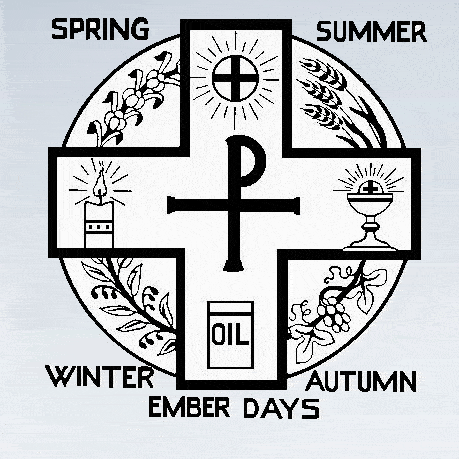

The 1917 Catholic Encyclopedia explains: “The purpose of their introduction, besides the general one intended by all prayer and fasting, was to thank God for the gifts of nature, to teach men to make use of them in moderation, and to assist the needy.
The immediate occasion was the practice of the heathens of Rome. The Romans were originally given to agriculture, and their native gods belonged to the same class. At the beginning of the time for seeding and harvesting religious ceremonies were performed to implore the help of their deities: in June for a bountiful harvest, in September for a rich vintage, and in December for the seeding; hence their feriae sementivae, feriae messis, and feri vindimiales.
The Church, when converting heathen nations, has always tried to sanctify any practices which could be utilized for a good purpose. At first the Church in Rome had fasts in June, September, and December; the exact days were not fixed but were announced by the priests. The “Liber Pontificalis” ascribes to Pope Callistus (217-222) a law ordering the fast, but probably it is older. Leo the Great (440-461) considers it an Apostolic institution. When the fourth season was added cannot be ascertained, but Gelasius (492-496) speaks of all four. This pope also permitted the conferring of priesthood and deaconship on the Saturdays of ember week–these were formerly given only at Easter. Before Gelasius the ember days were known only in Rome, but after his time their observance spread. They were brought into England by St. Augustine; into Gaul and Germany by the Carlovingians. Spain adopted them with the Roman Liturgy in the eleventh century. They were introduced by St. Charles Borromeo into Milan.
The Eastern Church does not know them. The present Roman Missal, in the formulary for the Embner days, retains in part the old practice of lessons from Scripture in addition to the ordinary two: for the Wednesdays three, for the Saturdays six, and seven for the Saturday in December. Some of these lessons contain promises of a bountiful harvest for those that serve God.“
Fasting four times a year is a tradition adopted from the Old Testament, and a continued obligation in accordance to Scripture:
Thus saith the Lord of hosts: The fast of the fourth month, and the fast of the fifth, and the fast of the seventh, and the fast of the tenth shall be to the house of Juda, joy, and gladness, and great solemnities: only love ye truth and peace. (Zechariah 8:19).
Four times a year, the Church sets aside three days to focus on God through His marvelous creation. These quarterly periods take place around the beginnings of the four natural seasons that “like some virgins dancing in a circle, succeed one another with the happiest harmony” [St. John Chrysostom].
The Ember Days are known in Latin as the quattuor anni tempora (the “four seasons of the year”), or formerly as the jejunia quattuor temporum (“fasts of the four seasons”) are true Catholic tradition dating back to the Apostles. Pope Leo The Great claims it was instituted by the Apostles. Pope Gregory VII (1073-1085), prescribed Ember days for the whole Catholic Church as days of fast and abstinence. He placed these “four mini Lents” consisting of three days: Wednesday, Friday and Saturday:
- the first comes in Winter, after the the Feast of St. Lucy (December 13)
- the second comes in Spring, the week after Ash Wednesday
- the third comes in Summer, after Whitsunday (Pentecost Sunday)
- and the last comes in Autumn, after the Exaltation of the Cross (September 14)
Though ignored by many in the Roman Church today, Ember Days have an official place within the traditional liturgy to be celebrated. Catholics should mark these days with fasting and abstinence similar to that of Ash Wednesday and Good Friday (one primary meal and two lesser meals while abstaining from meat completely on Ember Friday and partially on Ember Wednesday and Saturday).
“Alas! those days are gone, and Easter has not the same effect on the people of our generation! The reason is, that a love of ease and a false conscience lead so many Christians to treat the law of Lent, with as much indifference as though there were no such law existing.” ~ Abbot Gueranger “The Liturgical Year” .
They have not observed the Fast, or the Abstinence, of Lent: the mitigated form in which the Church now presents them to her Children, in consideration of their weakness, was too severe for them! They sought, or they took, a total dispensation from this law of Lenten mortification, and without regret or remorse. ~ Abbot Gueranger “The Liturgical Year” .
Lent and Advent is a time of renewal for the whole Church in light of the early Church Fathers’ teachings and Catholic traditions: Lenten meditation with Our Lady of Sorrows, and Advent meditation with the Holy Family, also preparing our hearts for the Second Coming of Jesus.

-
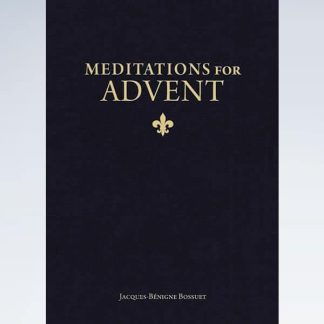 Meditations for Advent by Bishop BossuetUS$ 15.00
Meditations for Advent by Bishop BossuetUS$ 15.00 -
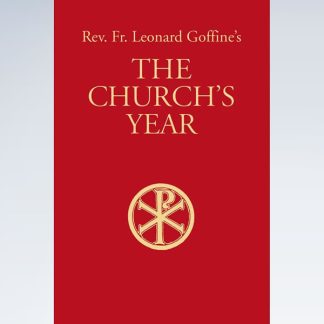 The Church’s YearUS$ 52.00
The Church’s YearUS$ 52.00 -
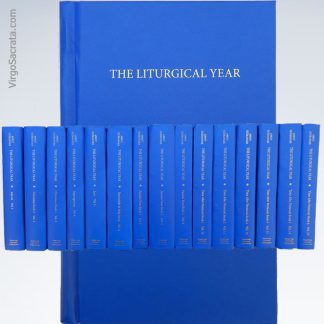 Liturgical Year 15 Volume Set, By Dom GuerangerUS$ 265.00
Liturgical Year 15 Volume Set, By Dom GuerangerUS$ 265.00 -
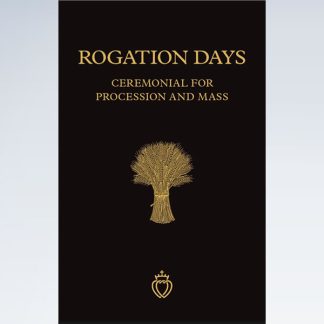 Rogation Days Ceremonial for Procession & MassUS$ 19.00
Rogation Days Ceremonial for Procession & MassUS$ 19.00 -
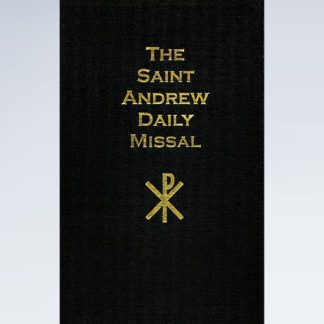 The Saint Andrew Daily Missal 1945 Edition (Gold Edges)US$ 82.00
The Saint Andrew Daily Missal 1945 Edition (Gold Edges)US$ 82.00 -
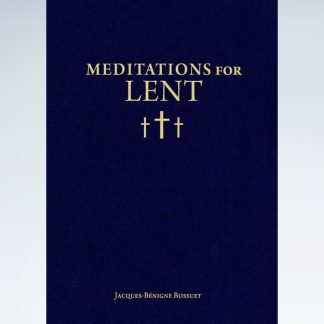 Meditations for Lent by Bishop BossuetUS$ 15.00
Meditations for Lent by Bishop BossuetUS$ 15.00
VIRGÓ SACRÁTA is a Christian mission-driven online resource and shop inspired from the beauty of Catholic faith, tradition, and arts. Our mission is to “Restore All Things to Christ!”, in continuing the legacy of Pope St. Pius X under the patronage of the Blessed Virgin Mary. “Who is she that cometh forth as the morning rising, fair as the moon, bright as the sun, terrible as an army set in battle array?” O Mary, conceived without sin, pray for us who have recourse to Thee.


